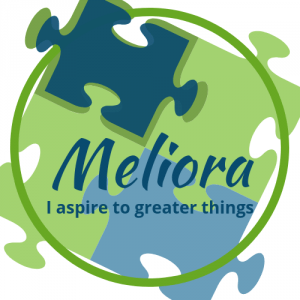Celebration!
For the past several months, I have been alternately a coach, cheerleader and nag in supporting a group of five teens as they have created and iteratively evolved a #project for National History Day (#NHD), a #process I detail here.
The students successfully advanced through two regional competitions. The stage was set for the last leap as they presented themselves before a panel of judges at Illinois History Day, the final round of competitions from which national delegates are chosen.
In theory, the interview is moot, as the judges are instructed to assess the projects based solely on the concrete evidence – the product (in this case a documentary) and supporting documentation (annotated bibliography and process paper). Having some insight into human behavior, I believe these informal interviews nonetheless influence the judges in their conclusions.
Initially, the group of #Meliora students was confident as they answered the judges’ questions. Then, they were asked about something they were unprepared for. They would have probably been best served by saying they didn’t know the answer. Instead, they fumbled around and several students gave conflicting information.
They left the interview totally dejected, knowing they had flubbed, and convinced they had lost their opportunity to advance. A few hours later, they glumly presented themselves for the closing ceremony, where the national delegates were to be announced. There are only 18 projects which advance from each state to the national level, and my students were in competition with dozens of other Illinois students. They understood the stakes.
 We all agonized through the obligatory announcements. Finally, the moment of truth arrived. Ploddingly, the announcer named the NHD qualifiers for other categories. She arrived at documentaries, backtracked, then spoke… “Senior level, group documentary… Colleen Moore…” Hysteria erupted among the Meliora contingent, beginning with the parents. The students were stunned, then raced up to collect their medals and to await the photo opps. Jubilant, I ran with my camera to capture their joy.
We all agonized through the obligatory announcements. Finally, the moment of truth arrived. Ploddingly, the announcer named the NHD qualifiers for other categories. She arrived at documentaries, backtracked, then spoke… “Senior level, group documentary… Colleen Moore…” Hysteria erupted among the Meliora contingent, beginning with the parents. The students were stunned, then raced up to collect their medals and to await the photo opps. Jubilant, I ran with my camera to capture their joy.
For a glimpse into how the #iterative process embedded in this competition (and in #PBL in general) helps develop a variety of skills, from critical thinking to creativity, take a peek at their product for the first competition:
And the one which earned them a spot at NHD:
Of course, they are not done. They will be revising their documentary one more time before heading to the University of Maryland in early June.
